Native Tree & Habitat Store
10% off orders of $300 or more - use code TREES300
5 fruit trees for $110 - use code FRUIT5
2025 Tree Sale: Conservation starts in your own backyard!
Online sales end Wednesday, April 16, 2025.
Tree Pick Up:
Friday, April 25th, 9 AM to 4 PM
Saturday, April 26th, 10 AM to 2 PM
Historic Charlton Park 2545 S. Charlton Park Rd. in the red barn
Paper order forms are available at the Barry Conservation District Office for those who prefer to pay by check or cash.
Paper order form sales will end April 4, 2025.
Broadleaf Shrubs
How to plant bareroot trees:
Keep seedlings in cool, dry place, and the roots moist until you are ready to plant. This will keep them alive and in their dormant state.
Prepare a hole by digging it as depth of roots, so they can fall straight down and twice as wide as the roots.
Place your bareroot tree in the hole and hold it upright while backfilling with loose soil.
Gently pat down the soil around the base of the tree.
Water regularly through the growing season with deep watering technique.
Barry Conservation District offers a variety of bare root native tree and shrub seedlings along with fruit trees that thrive in Michigan's climate.
Native trees and shrubs grow naturally in the Barry County area and are particularly well-suited to supporting the local wildlife. When planted appropriately, native plants require less water and maintenance than non-native species, are more resistant to local “pests”, and are better-suited for sustaining diverse wildlife communities.
We encourage landowners to transform their properties into thriving ecosystems that support local wildlife and enhance the natural rural beauty of Barry County. Our selection includes species specifically chosen to meet conservation goals such as enhancing wildlife habitat, reducing erosion, and supporting pollinators.
Not sure what would work best for you? Give us a call and we can assist you in selecting the best species to meet your conservation goals and create a thriving ecosystem in your yard.
Benefits of Native Trees and Plants
Increase Property Value: Create shaded areas and natural privacy screens that enhance your property’s aesthetic appeal.
Improve Wildlife Habitat: Native plants are uniquely suited to best support wildlife by providing food and shelter.
Enhance Local Food Webs: Trees like oaks, willows, cherries, birches, and maples support diverse insect communities, which in turn nourish birds and other wildlife.
Conserve Water: Plants with large canopies and extensive root systems reduce runoff, filter nutrients, and support clean water.
Support Pollinators: They provide food and habitat for bees, butterflies, and other pollinators which benefits crops and local food production.
Sequester Carbon: Plants store carbon in their above-ground tissues and root systems, reducing atmospheric carbon levels.





